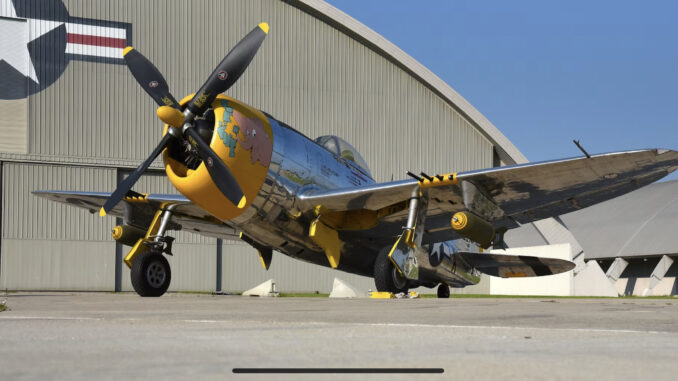
About the Republic P-47 Thunderbolt
A successful high-altitude bomber and America’s leading fighter in the ground-attack role, the Republic P-47 Thunderbolt served the USAAF from 1941 to 1945. Produced by Republic Aviation, the Thunderbolt was a short-to-medium-range escort fighter capable of combat at high-altitude (air-to-air) and also efficient in ground attacks.
The aircraft survived various combats including the World War II alongside US and participated with Allied air forces. The Thunderbolt was not only well known for its contribution to various wars and combat but also for its distinctive looks. The Republic P-47 had a remarkable bulky built and was the heaviest single-engine fighter to enter World War II. The aircraft was also nicknamed “Jug” due to its appearance as it stood on its nose. Despite its heavy size, the aircraft had no trouble providing efficient performance and was produced in great numbers than any other US fighter. The Thunderbolt with its extraordinary firepower and damage resistance remained airworthy for years.
P-47: Technical Specifications
The P-47 was designed by Alexander Kartveli with the of the United States Army Corps (USAAC) and the design was given the designation XP-47. However, in the mid-1940s, the Republic and USAAC concluded the XP-47 were no match to German Luftwaffe fighters and decided on improvisation of the design. The XP-47A, an improved design, was proposed but it failed as well, and a larger design was offered by Kartveli to USAAC in June 1940. The offer was accepted and the USAAC ordered a prototype in September designated as the XP-47B.
The new XP-47B was of all metal construction with elliptical wings (straight leading edge that was slightly swept back). The cockpit was air-conditioned with comfortable seats as the pilot’s compared it with a lounge chair. The doors of the canopy hinged upwards and the main and auxiliary self-sealing fuel ranks were equipped under the cockpit. The design gave the aircraft a total fuel capacity of 305 US gal. It represented a giant size and Kartveli remarked, “It will be a dinosaur, but it will be a dinosaur with good proportions.” With its primary armament of eight .50-caliber machine guns, and a capacity for 5-inch rockets or a bomb load of 2,500 lbs, the P-47 fighter aircraft weighed up to 8 tons, making it one of the heaviest fighters of the war.
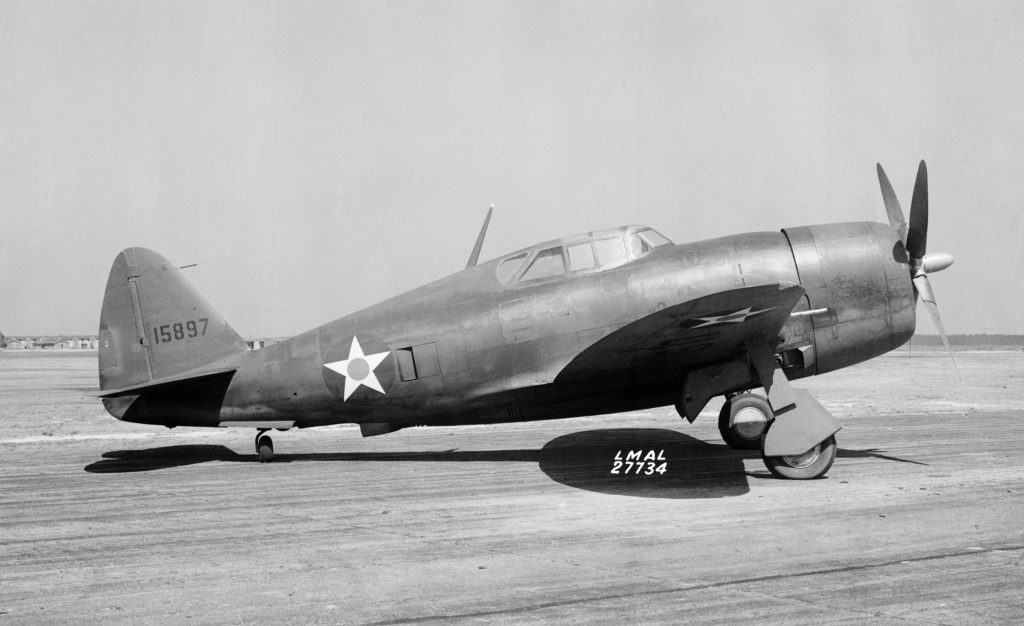
Soon enough, the newly reorganized United States Army Air Forces placed an order for 171 production aircraft, the first being delivered in December 1941. There were more than 15,600 Thunderbolts manufactured between 1941 and 1945, and they served in every theatre of the war, performing a range of missions from bomber escort to close air support.
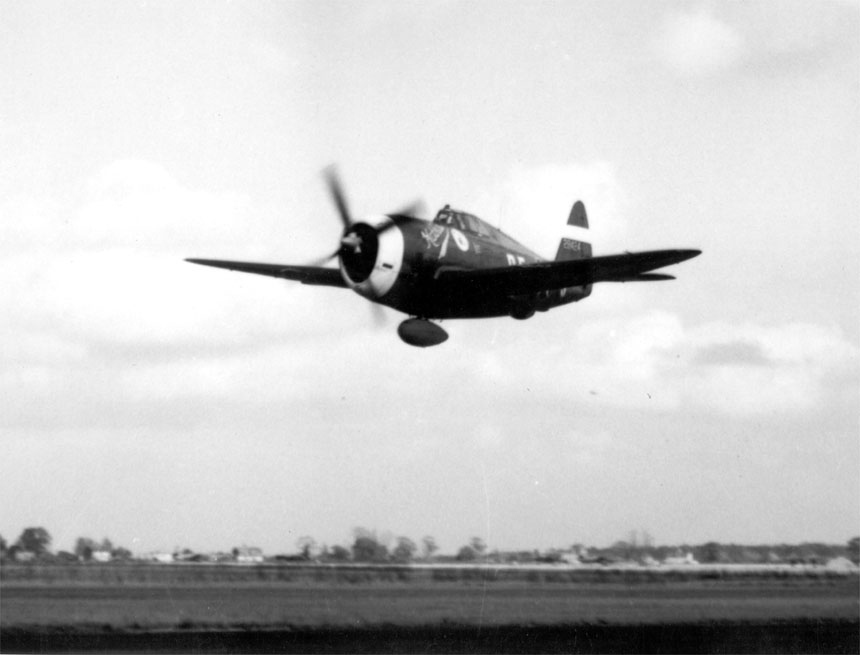
General Specifications
| Type | High Altitude Bomber |
| Manufacturer | Republic Aviation |
| Engine | 1 × Pratt & Whitney R-2800-59 18-cylinder air-cooled radial piston engine, 2,000 hp (1,500 kW) |
| Weight | |
| Empty | 10,000 lb |
| Maximum Take-off | 17,500 lb |
Dimensions
| Wingspan | 12.43 m |
| Length | 11.02 m |
| Height | 4.472 m |
Performance
| Maximum Speed | 426 mph |
| Service Ceiling | 42,000 ft |
| Range | 900 nm |
Top Republic P-47 Milestones
The P-47 received great remarks for its high dive speed and high-altitude performance with some criticism in its rate of turn and climb, particularity at low to medium altitudes. Despite of its heavy stature the aircraft provided maximum power at 27,000 ft and in the thin air above 30,000 ft. Its radial piston engine had a high tolerance for damage compared to the liquid-cooled engines of the time.
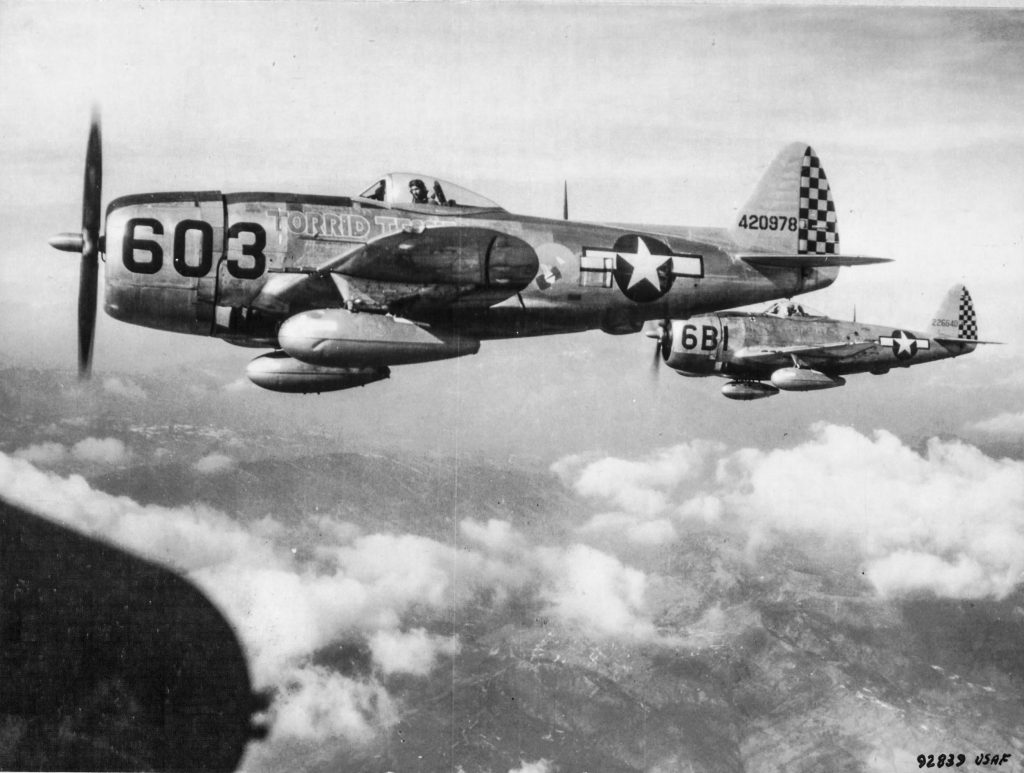
The P-47 demonstrated formidable fighter-bombing due to its good armament, heavy bomb load, and ability to survive enemy fire. The Thunderbolt carried more firepower than other single-engine American fighters with its eight .50 in machine guns. Such massive firepower and armament helped the P-47 pilots claim 20 Luftwaffe Messerschmitt Me 262 jet fighters and four Arado Ar 234 jet bombers in aerial combat.
The Wars
The P-47 was initially successful in the combat due to the tactics used while rolls as it had an excellent role rate along with an energy-saving dive. The Thunderbolt served as a primary bomber in British RAF, French Air Force, Peruvian Air Force, and Yugoslav Air Force apart from the USAAF. It also served with other Allied air forces, including those of France, the United Kingdom, and the Soviet Union, as well as Allied Mexican and Brazilian squadrons.
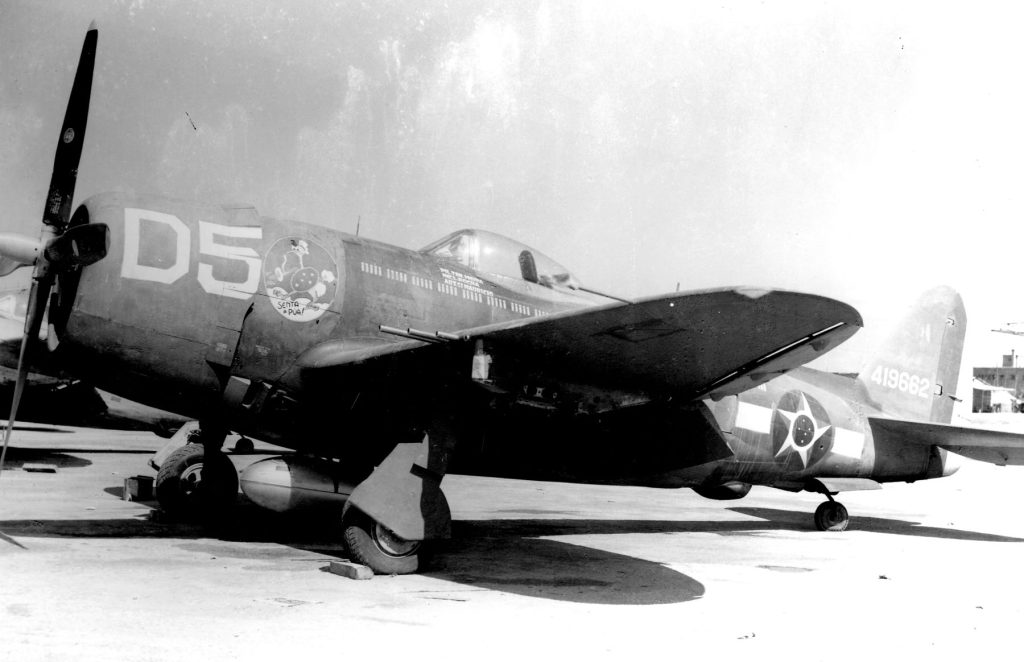
After the XB-47B’s first flight on May 6, 1941, it took the aircraft another two years to see its first combat. However, before its first combat in 1943, the P-47 had already flown more than a half a million sorties in Europe and the Pacific. This happened as in the beginning in January 1943, Thunderbolt fighters were sent to the joint Army Air Forces, civilian Millville Airport in Millville, New Jersey, to train civilian and military pilots. After significant training period, the first P-47 combat mission took place on March 10, 1943, with the 4th FG when they took their aircraft on a fighter sweep over France. Although, the mission failed due to radio malfunction and all P-47s were reequipped with British radio and the mission continued after April 8. This mission was a success under Major Don Blakeslee and scored Thunderbolt its first victory.
POST WAR
Thunderbolts were re-designated as the F-47 following Japan’s surrender and the aircraft continued in service years after the WWII with an unfortunate 5,934 cancelled orders. The F-47 continued to serve with the USAAF through 1947, the USAAF Strategic Air Command from 1946 to 1947, the active-duty USAF till 1949 and with the Air National Guard till 1953. The plane was retired by the US, however, NATO allies like Turkey, Portugal and Italy continued to maintain Thunderbolts as part of their squadrons till 1950s. Beyond these years, the Thunderbolts was flown by other countries as well, including Latin America until the 1960s and Peru until 1966.
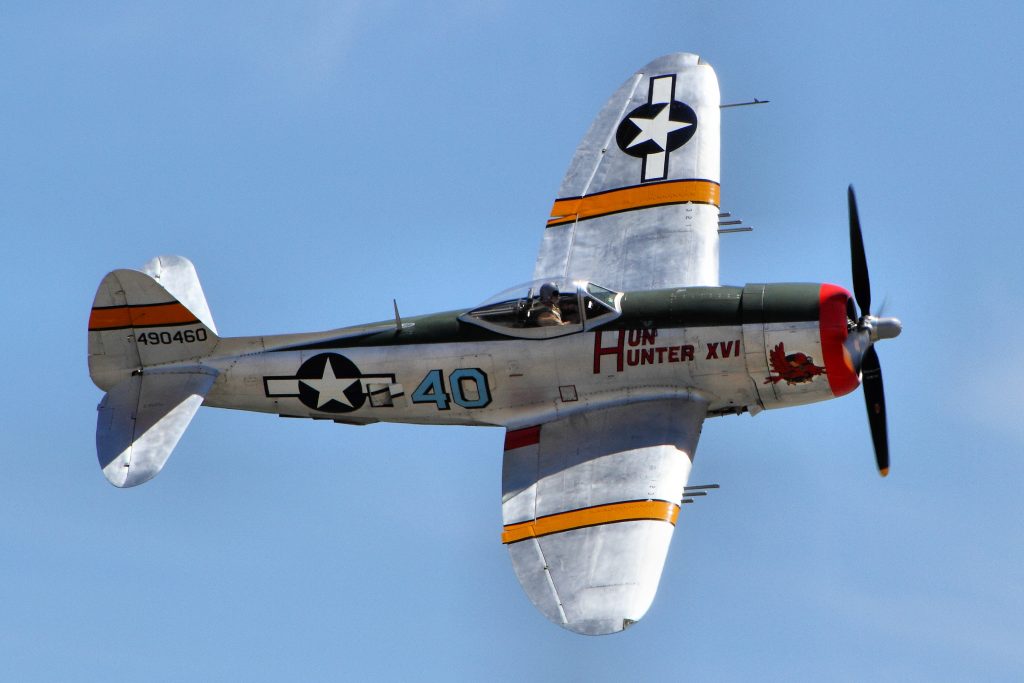
The Bolt Ends
The Thunderbolt gained popularity in the years it was gone through various shows and documentaries. The 2001 television documentary Thunderbolts: The Conquest of the Reich was presented by the History Channel and directed by Lawrence Bond. It explored the final months of World War II over Germany through the accounts of four P-47 Thunderbolt pilots from the 362nd Fighter Group, featuring rare, original color footage from 1945. The documentary also gave an idea of the pilots’ experiences and the intense combat environment, reflecting on the destruction of over 6,000 German targets, despite the group suffering a nearly 50% casualty rate.
The P-47 Thunderbolt was also featured in an episode of World’s Deadliest Aircraft by the Military Channel, highlighting its formidable role in combat. In 2015, the P-47 was honored by being named the state aircraft of Indiana due to its manufacturing roots in Evansville. This legacy was further celebrated by naming the Evansville Thunderbolts minor league hockey team after the aircraft.
In addition, several P-47D variants were acquired by the Peruvian Air Force in the mid-1950s, where they played a significant role in modernizing Peru’s fighter fleet as ground-attack aircraft. These planes served until their retirement in 1969. Post-retirement, some of these aircraft were returned to the United States and are now part of museum collections, including a restored P-47D-40 (S/N 45-49167) currently displayed at the American Heritage Museum. This multifaceted history underscores the Thunderbolt’s enduring influence in both military and cultural contexts.
Related Articles
"Haritima Maurya, pen name, ""Another Stardust,"" has been passionate about writing since her school days and later began sharing her work online in 2019. She was drawn to writing because of her love for reading, being starstruck by the art of expression and how someone can make you see and feel things exclusive to their experience. She wanted to be able to do that herself and share her mind with world cause she believes while we co exist in this beautiful world least we can do is share our little worlds within.
As a commercial pilot, Haritima balances her passion for aviation with her love for storytelling. She believes that, much like flying, writing offers a perspective beyond the ordinary, offering a bridge between individual experiences and collective understanding.
Through her work, ""Another Stardust"" aims to capture the nuances of life, giving voice to moments that resonate universally. "



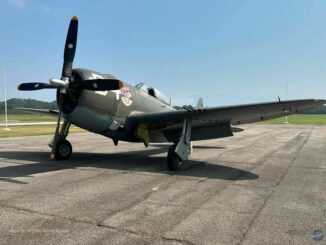
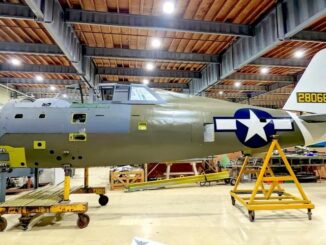
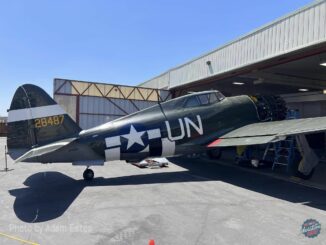
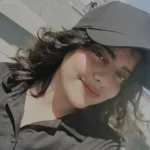


Some relevant additions to Haritima’s cogent article:
The P-47 was an expensive (~40% more than a P-51)
machine to produce, and operate – with its turbo
optimised R-2800 engine designed for high altitude,
and being a ‘gas hog’, it needed regular upgrades to
accommodate the fuel requirements for long-range
missions (including a ‘wet wing’ tankage redesign for
the final, & heaviest P-47N variant) – to the extent
that fully-loaded, it required nearly a mile of strip
for take-off, during which – if a incipient problem
with say, turbo surge, or damage to its tortured tyres
– maybe due to a new pilot’s nervous handling – meant
an abortive take-off – the very real risk of becoming
a ‘rolling crematorium’ (as cruel taunting by rival
Mustang jocks put it) – when lift off failed – then
a horrific holocaust fed by a huge volume of hi-test
gas, lit up by yards of red-hot turbo ducting – was
for sure a fearful prospect, to weigh on the minds
of ‘newby’ and ‘tired’ pilots, alike.
Ironically, once the Commanders of the USAAF 8th AF
Strategic Bombing units became aware of the newly
altitude-enhanced performance of the Merlin-powered
P-51 Mustangs (which were originally slated for 9th
AF Tactical units as ground attackers) – all but one
(56th) P-47 Fighter Groups were duly relegated to the
tactical low-level role with the 9th AF, while ‘their’
P-51s took over the ‘glamour’ role with the 8th AF,
– as evidenced by the far superior results obtained.
Per article information, although expensively built
as turbo-optimised for high altitude work, the P-47
units did their ‘down & dirty’ hard-yards tactical
work relentlessly, despite their relative performance
disadvantages at low-level, duking it out with the
Luftwaffe opposition, both fighters and flak, while
yes, taking heavy losses on these operations.
Interestingly, the ‘Lend-Lease’ P-47s provided to
the British and Soviet forces were not likewise
thrown into the fray against the Nazi defences –
the British preferred their own Typhoon – as the
superior weapon against the hardest opposition
in the air-to-ground role, and so sent their own
Thunderbolts east, versus Japanese forces – which
were not as well-organised/equipped to defend
against fighter-bomber/ground attack operations.
The Soviets tested their P-47s, yet retained them
for high-altitude defence unit duty, and regarded
usage of P-47s in air-to-ground attack – as a simply
‘ludicrous’ idea – in such a sophisticated aircraft.
While USAAF struggled to find an effective role for
its (also expensively turbo-optimised) P-38 units
flying from Britain against ‘Festung Europa’ – they
fared even worse than the P-47, being fully rejected
by the 8th AF, while 9th AF found it too vulnerable
to share ‘A2G’ duties with the P-47, such that it was
then tried as a ‘defacto’ medium bomber – led by a
pathfinder P-38 with the ‘droop snoot’ perspex-dome
nose/bomb-sight modification (~ 100 expensive
conversions) per ETO role-finding for the P-38).
Yet, in the PTO against the forces of Nippon,
the P-38 was preferred by the USAAF over the
P-47 – being the primary, and most successful
USAAF fighter (until the arrival of the P-51
in 1945, as required for B-29 escort duties,
flying out of Iwo Jima).
I do not intend to demean the Thunderblot by noting
these facts above, but add them to provide balance.